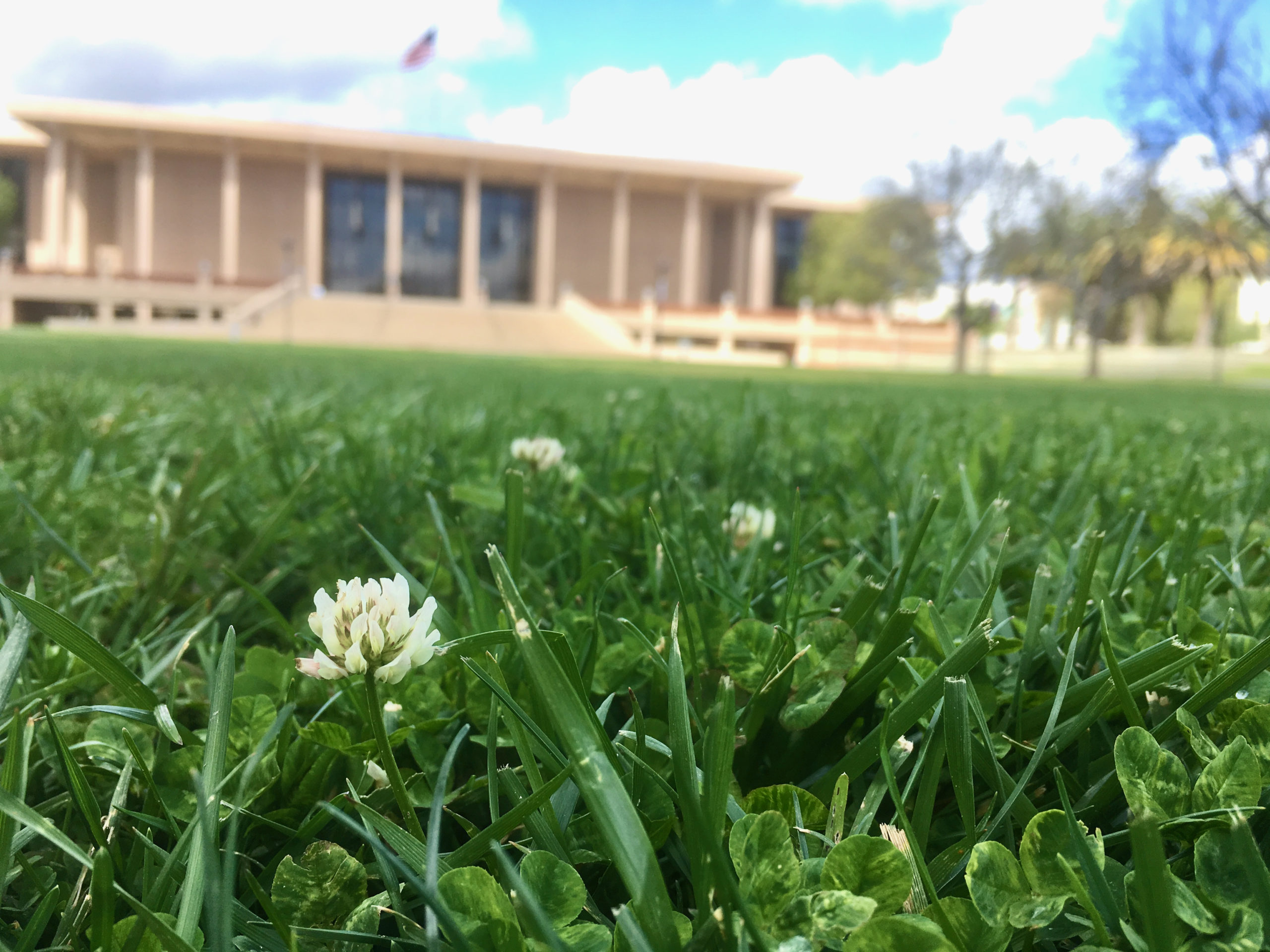White clover may seem to be an inconspicuous weed in the lawns of homes and public spaces across Los Angeles, but according to new research published today in the journal Science by a collaborative team of hundreds that included CSUN biologists, it’s also a world-spanning story of evolution.

White clover, or Trifolium repens, is a member of the bean family that grows well amidst the grass seeded in cultivated lawns, and it has spread to every continent where grass lawns are part of the built environment. The Global Urban Evolution (GLUE) Project, conceived and coordinated by a team of evolutionary biologists at the University of Toronto Mississauga, examines a single important trait of the little plants, the production of hydrogen cyanide as a defense against herbivores. The GLUE lead team found that white clover populations in the center of cities tended to have fewer plants capable of producing hydrogen cyanide than populations in nearby rural areas. They wondered whether this pattern was replicated more broadly, and what might be causing it, so they put out a call to biologists around the world to sample clover in different cities and test it for hydrogen cyanide production.
Sampling in Los Angeles was taken up by CSUN Assistant Professor of Biology Jeremy Yoder and Biology alumnus Nicholas Poulos, who has since gone on to the PhD program in Entomology at UC Riverside. Yoder, Poulos, and other members of Yoder’s lab collected clover along a transect running from downtown LA to Porter Ranch — and through the CSUN campus, where they placed two sampling sites. Poulos then tested the sample plants for hydrogen cyanide production with a simple chemical assay, and they delivered this data, plus samples of leaf tissue for DNA sequencing, to the lead team in Toronto.
GLUE contributors in 160 cities followed the same protocol, building up a dataset of more than 110,000 plant samples. The lead team used remote-sensing data to compare environmental conditions across cities, and tested whether the frequency of cyanide production was similarly correlated with differences between urban cores and nearby more rural conditions. They found that although results varied across the different locations, the largest number of cities had the expected pattern, with hydrogen cyanide less common in white clover growing in city centers. The authors conclude that reduced herbivore activity in built-up areas has reduced the selective benefit of investing in the hydrogen cyanide defense, so that plants that don’t make the chemical are at higher frequency — and they note that this worldwide pattern suggests that urbanization creates relatively similar environmental conditions in very different geographic locations.
The full paper is available on the Science website.

